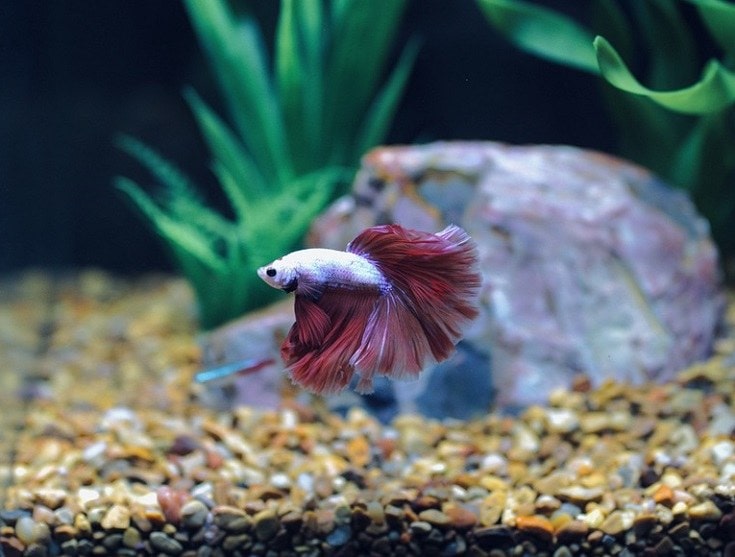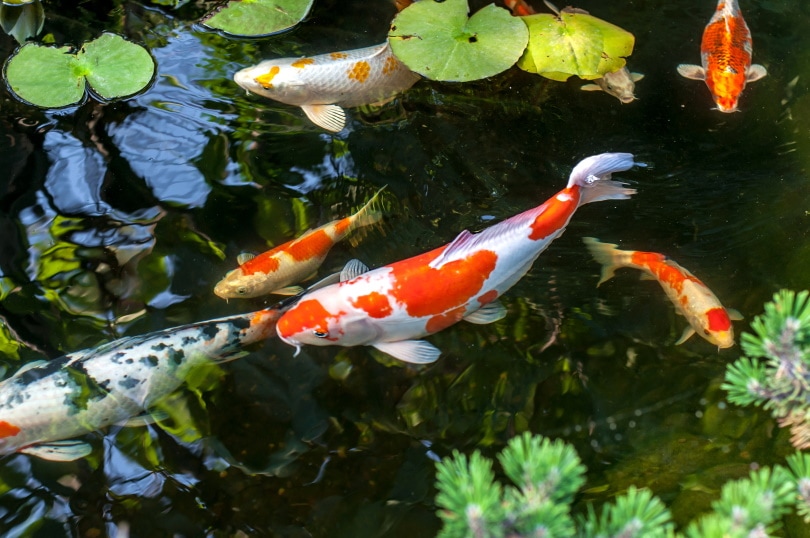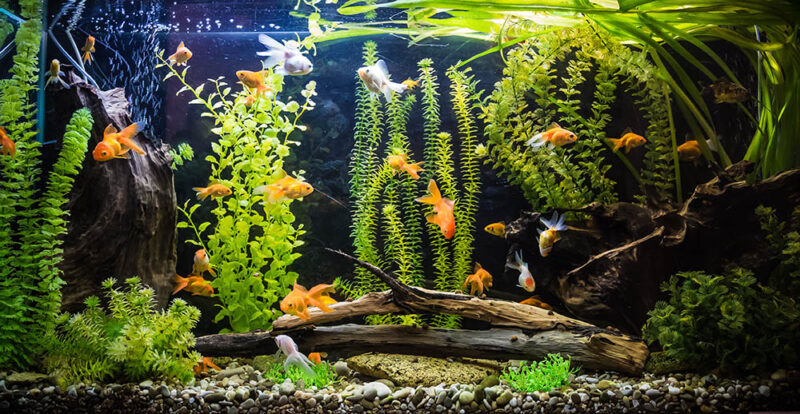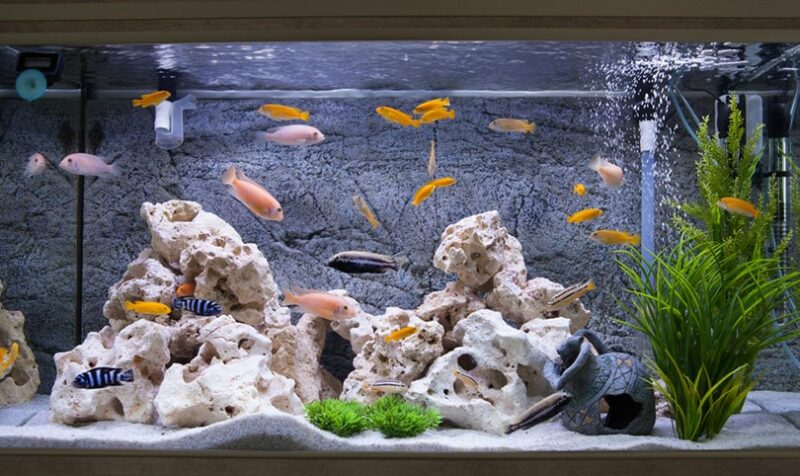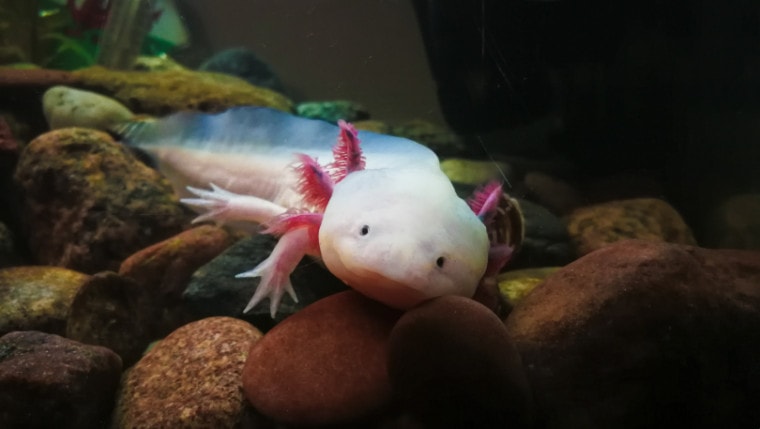
Axolotls are the cute amphibians that always look like they’re smiling. They’re growing in popularity because of their charm and feathery gills. They do have specific needs, though, and they aren’t always a great pick for first-time amphibian caregivers unless you are well-versed on their needs. Leucistic Axolotls are often confused as albino due to their white coloration and pink or red gills. They are different, though, and very unique pets.
Quick Facts About Leucistic Axolotls
| Species Name: | Ambystoma mexicanum |
| Common Name: | Axolotl |
| Care Level: | Moderate |
| Lifespan: | 10-15 years |
| Adult Size: | 10-18 inches |
| Diet: | Carnivorous |
| Minimum Tank Size: | 20 gallons |
| Temperature & Humidity | 60-70°F; Humidity is NA |
Do Leucistic Axolotls Make Good Pets?
Leucistic Axolotls can make excellent pets for people who have researched their care and prepared before bringing them home. They can become social and comfortable with their owners and they tend to be relatively docile. The leucism makes them easy to spot, even in a dark tank, which can be a benefit since they prefer darkened environments.
One downside to owning Axolotls is that it’s recommended to keep them in species-only tanks. Smaller fish and invertebrates can quickly become a snack for an Axolotl. Larger fish tend to nip at the tender gills of your Axolotl, which can easily cause injury. Any tank mate you attempt to keep with an Axolotl should be peaceful but too large to be eaten.
Appearance
Axolotls are fully aquatic salamanders, so they have a very lizard-esque appearance. However, they have a dorsal fin that runs from partway down the body all the way down the tail. They have tiny, unwebbed feet. They also have slightly upturned mouths that seem to give them a perpetual smile.
Their most distinctive characteristic is their feathery gills that stick out from the sides of the face, giving them a framed appearance. Leucistic Axolotls are white or pinkish in coloration and have dark eyes. Their gills are usually pink or red.
How to Take Care of Leucistic Axolotls
Habitat, Tank Conditions & Setup
Tank
Adult Axolotls should be kept in tanks that are at least 20 gallons in size, but a larger tank may be best. Solid waste should be removed from the tank every day or two with a gravel vac. Adequate filtration for the number of Axolotls in the tank is necessary to maintain health and good water parameters.
Lighting
Axolotls lack eyelids and are sensitive to bright lights, so they require minimal tank lighting. Avoid any types of lights that may warm the water. Natural lighting within the room the tank is in may be adequate. Nighttime lighting can be used to allow you to watch your Axolotl when it’s at its most active in the dark.
Heating (Temperature & Humidity)
These amphibians are cool water animals and should not be kept in a tank with a heater unless it is absolutely necessary to maintain safe temperatures. They prefer water temperature from 60-65°F but can thrive in temperatures up to 70°F. Since they are fully aquatic, tank humidity is not a concern with Axolotls.
Substrate
Axolotls are known to ingest substrate and can become impacted. Ideally, they should be kept in tanks with bare bottoms or fine-grained sand that can be passed if they ingest it.
Tank Recommendations
| Tank Type | 20-gallon+ aquarium |
| Lighting | Dim or natural non-warming lighting |
| Heating | Not recommended |
| Best Substrate | Fine-grained aquatic sand or bare bottom |
Feeding Your Leucistic Axolotl
Your Leucistic Axolotl is a fully carnivorous animal, so they will not require plant matter. They prefer live food and can be fed things like earthworms, nightcrawlers, and blackworms. They can also be offered thawed frozen foods or meaty foods like cooked shrimp, bloodworms, and even feeder insects as a treat. Salamander or axolotl-specific commercial foods should also be provided.
Axolotls require feeding at least once daily. They have poor eyesight and it’s best to offer food directly in front of them. This can be done with feeding forceps or something similar that will not accidentally injure the Axolotl.
Diet Summary
| Commercial Pellets | 50% of diet |
| Insects | 50% of diet |
| Meat | As a treat |
| Supplements Required | None |
Keeping Your Leucistic Axolotl Healthy
The best way to keep your Leucistic Axolotl healthy is to provide good water quality, a low stress environment, and a healthy diet. A fully cycled tank is necessary to create high water quality and adequate filtration that doesn’t create a strong current to help maintain health. Also, provide a safe tank environment with no sharp edges to prevent injury to your Leucistic Axolotl’s sensitive skin.
Common Health Issues
The most common health problems you may encounter with a Leucistic Axolotl are related to water quality issues. These can include skin infections, parasitic infections, and gill irritation. Some water quality issues, like elevated ammonia or nitrite, can rapidly lead to death.
Lifespan
With proper care, your Leucistic Axolotl can be expected to live for 10-15 years. However, many Axolotls are not kept in a proper environment, which can significantly shorten their life expectancy. Closely monitor your water parameters and make sure you’re feeding high-quality food to provide your Leucistic Axolotl the longest life possible.
Breeding
Keep sex-only tanks of Axolotls unless you are attempting to breed. Males will overbreed females and may injure or kill them, so they should not be allowed unfettered access to a female. Axolotls are relatively easy to breed, even in the home aquarium.
Males will deposit spermatophore sacs and then lead the female over them, which she then picks up and uses to fertilize eggs. Sometime in the next 12 hours to 3 days, the female will lay her fertilized eggs. Female Axolotls can lay up to 1,500 eggs in a single laying. Once laid, the eggs will take around 15 days to hatch.
Are Leucistic Axolotls Friendly? Our Handling Advice
Leucistic Axolotls may be shy, especially during daytime hours. They tend to adjust to your presence and feeding routine quickly. However, you should not handle your Leucistic Axolotl unless necessary. They have sensitive, permeable skin that can easily be damaged by handling. They also are not fond of being handled and it may cause them undue stress.
Shedding & Brumation: What to Expect
Axolotls do not shed and will usually not enter a state of brumation in the home aquarium. If their water temperature drops below their range of comfort, you may notice lethargy and a decreased appetite. If you notice these signs, check your water temperature and parameters.
How Much Do Leucistic Axolotls Cost?
Prepare to spend $30-$80 or more to acquire a Leucistic Axolotl. These salamanders are prized for their coloration, which can drive up the cost. When you first acquire your Leucistic Axolotl, you’ll also need to be prepared for the expenses associated with purchasing and setting up a tank and food.
Care Guide Summary
 Final Thoughts
Final Thoughts
A Leucistic Axolotl will never cease to put a smile on your face with its flowy gill stalks and goofy smile. They do require specific care, but it can be easy to achieve with proper research and preparation. Their diet and tank needs are easily met if you understand them. These fun salamanders can be with you for a long time with proper care and maintenance.
Featured Image Credit: ArnPas, Shutterstock

